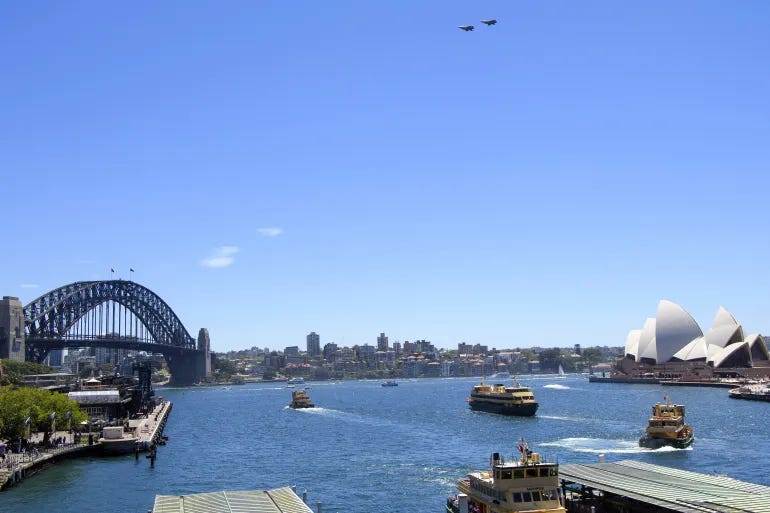From Global Economic Leader to Struggling Nation: Australia’s Economic Decline
Once a model of resilience, Australia now grapples with slow growth, inflation, and a housing crisis.
Sydney, Australia – In the midst of the 2007-2009 Global Financial Crisis, Australia stood as a beacon of economic stability. Unlike other developed nations, it emerged from the worst global downturn since the Great Depression without experiencing a recession. However, the same economy that once garnered worldwide admiration now finds itself lagging behind many of its global peers.
Racheal Clayton, 22, reflects on the stark contrast between her childhood during the crisis and her present-day struggles. While she graduated university in 2022 with optimism, the country’s economic challenges now cloud her future.
“Australia’s economy is growing at its slowest pace since the early 1990s,” Clayton says. With a gross domestic product (GDP) growth of just 0.8 percent in 2024, the nation trails behind the United States and the European Union, which saw respective expansions of 3.1 percent and 1 percent.
Immigration-driven population growth is the only thing preventing Australia from slipping into a recession, as per capita growth has been negative for the past seven quarters. Clayton, like many of her peers, struggles with financial uncertainty despite having a full-time job in public relations. She also works part-time as a personal trainer to cover her living expenses, including food, insurance, and vehicle costs.
“While I’m privileged to live at home, I still find it difficult to manage my expenses,” she says. “If I take a break from my part-time job, I struggle.”
The Economic Pressures
Australia’s economy has faced a series of blows since the pandemic, including skyrocketing inflation, which peaked at 7.8 percent in December 2022. At the same time, wages have stagnated, with real wages still 4.8 percent below pre-pandemic levels as of last year.
With property prices among the highest in the world, Clayton sees homeownership as an unattainable goal. “It’s about finding financial security in different ways. Owning a home is no longer an option for my generation,” she says.
The country’s once-uninterrupted economic growth, which lasted 28 years before the pandemic, has faltered since COVID-19. Australia now struggles with high interest rates, declining productivity, and diminishing demand for key exports like iron ore.
Even without a formal recession, many Australians feel the impact of an economic downturn. A Salvation Army survey found that 1 in 4 Australians were concerned their children might miss out on holiday presents, and 12 percent worried about food shortages.
Housing Crisis and Interest Rates
Rising mortgage payments due to the Reserve Bank of Australia’s interest rate hikes have placed further strain on households. After reducing the benchmark rate to near zero during the pandemic, the RBA raised the rate to 4.35 percent to control inflation. Treasurer Jim Chalmers acknowledged that these hikes have “smashed the economy,” contributing to low consumer spending, which accounts for more than half of Australia’s GDP.
The ongoing housing shortage also compounds the nation’s economic woes. By 2027, Australia faces an estimated shortfall of 106,300 homes, pushing property prices and rents even higher.
Migration and Economic Policy
With a federal election on the horizon, political leaders are considering reducing migration to alleviate cost-of-living pressures. Australia’s immigration policies have been relaxed to address labor shortages, resulting in a record-breaking net migration of 547,200 people in 2023. However, in 2023, the Labor Party proposed cutting immigration levels in response to housing and infrastructure challenges.
Despite the economic challenges, migration has not been the cause of Australia’s struggles. Experts like Trent Wiltshire from the Grattan Institute argue that it has supported the economy, preventing an even worse slowdown. Wiltshire emphasizes that the country needs productivity-enhancing reforms to improve living standards.
The Path Forward
Economist Nicki Hutley attributes much of Australia’s current economic weakness to a lack of investment in future growth. While other nations have focused on green energy and diversification post-pandemic, Australia has struggled with inefficient spending, such as building homes that would have been constructed anyway.
“We didn’t invest wisely,” Hutley says. “We need to diversify our economy and create the right frameworks to attract investment.”
In 2024, the Labor government forecasted a GDP growth of just 1.75 percent and a $26.9 billion deficit. As Australia grapples with these challenges, the question remains: can the country rediscover its former economic strength, or is it destined to fall further behind its global counterparts?


